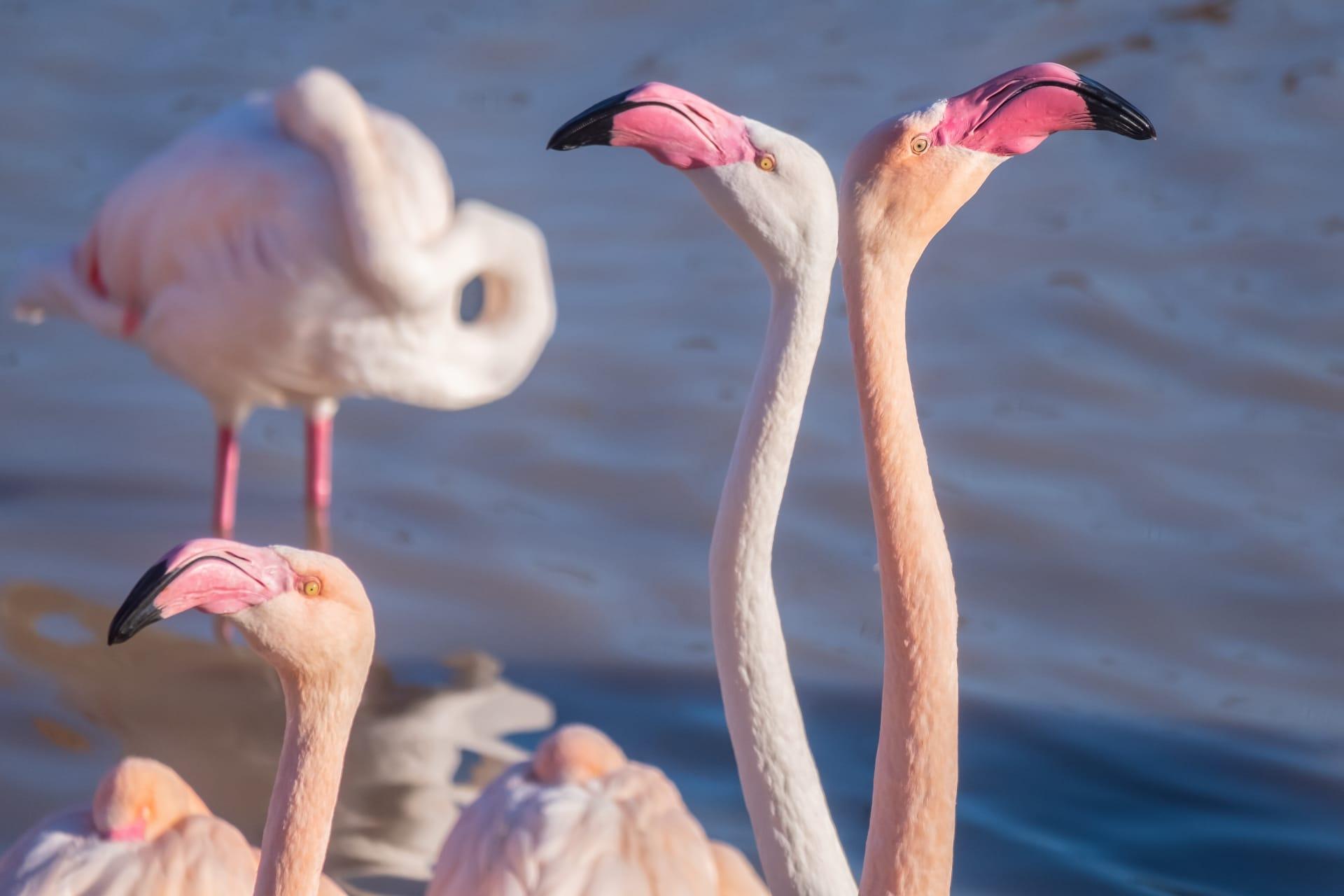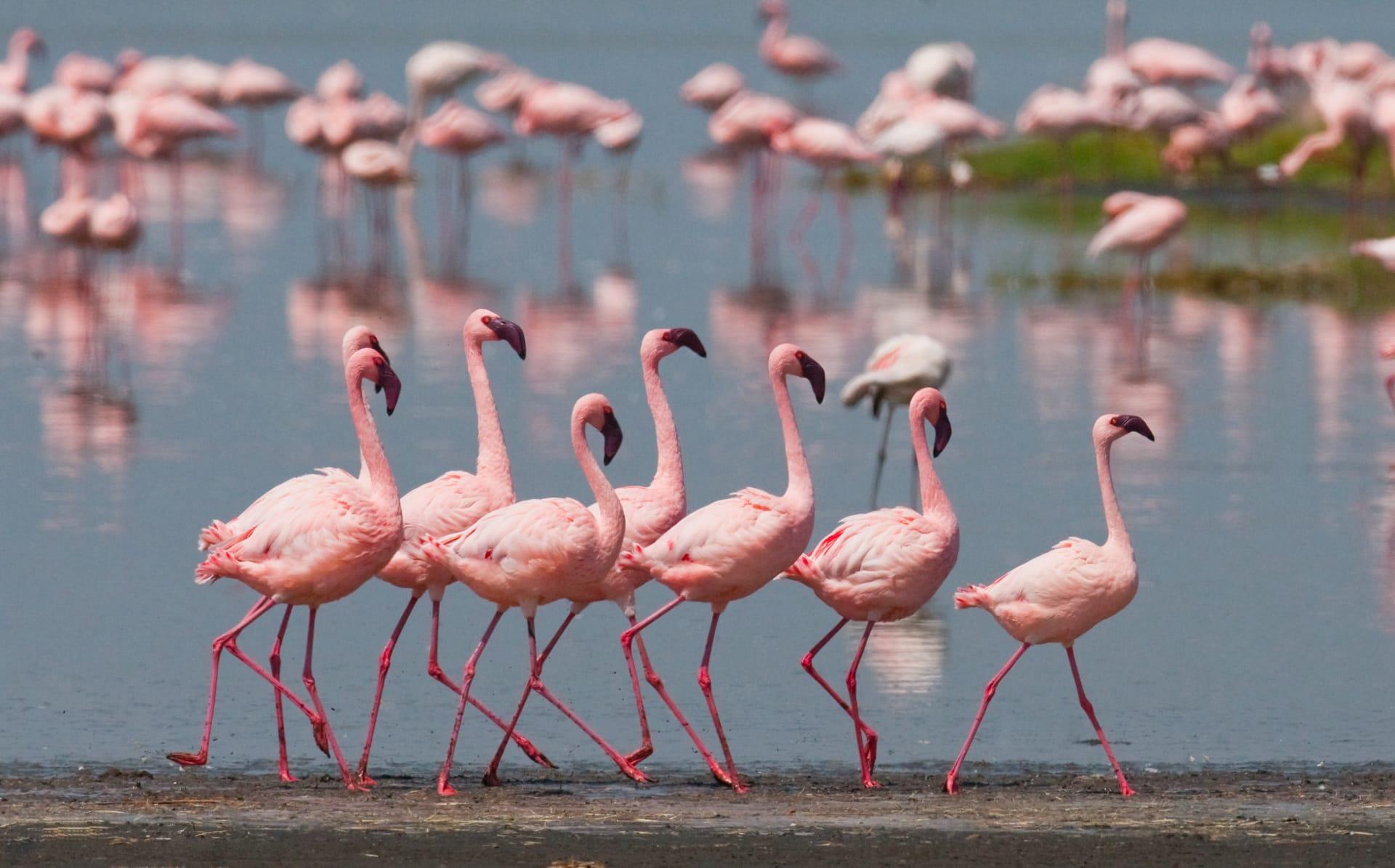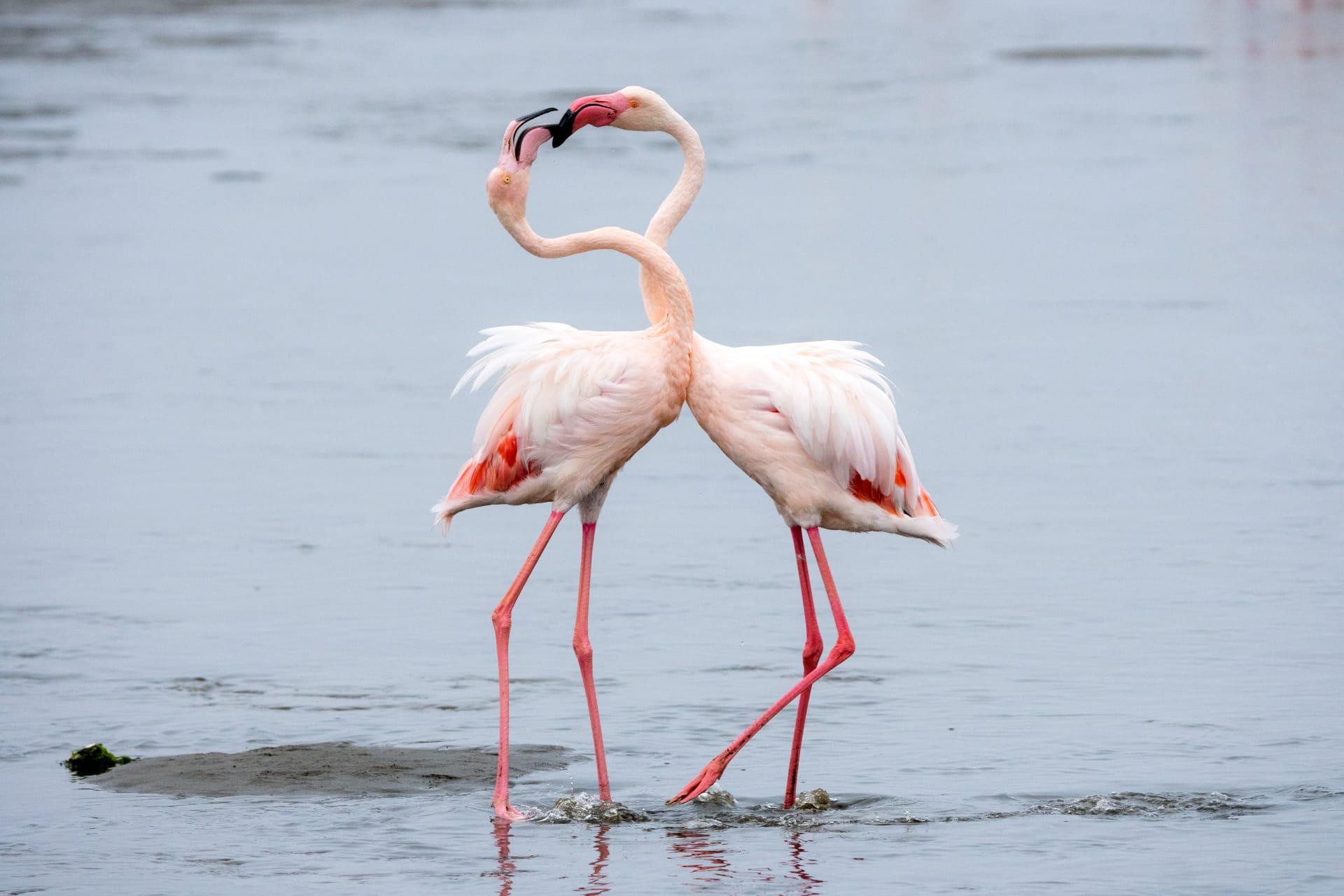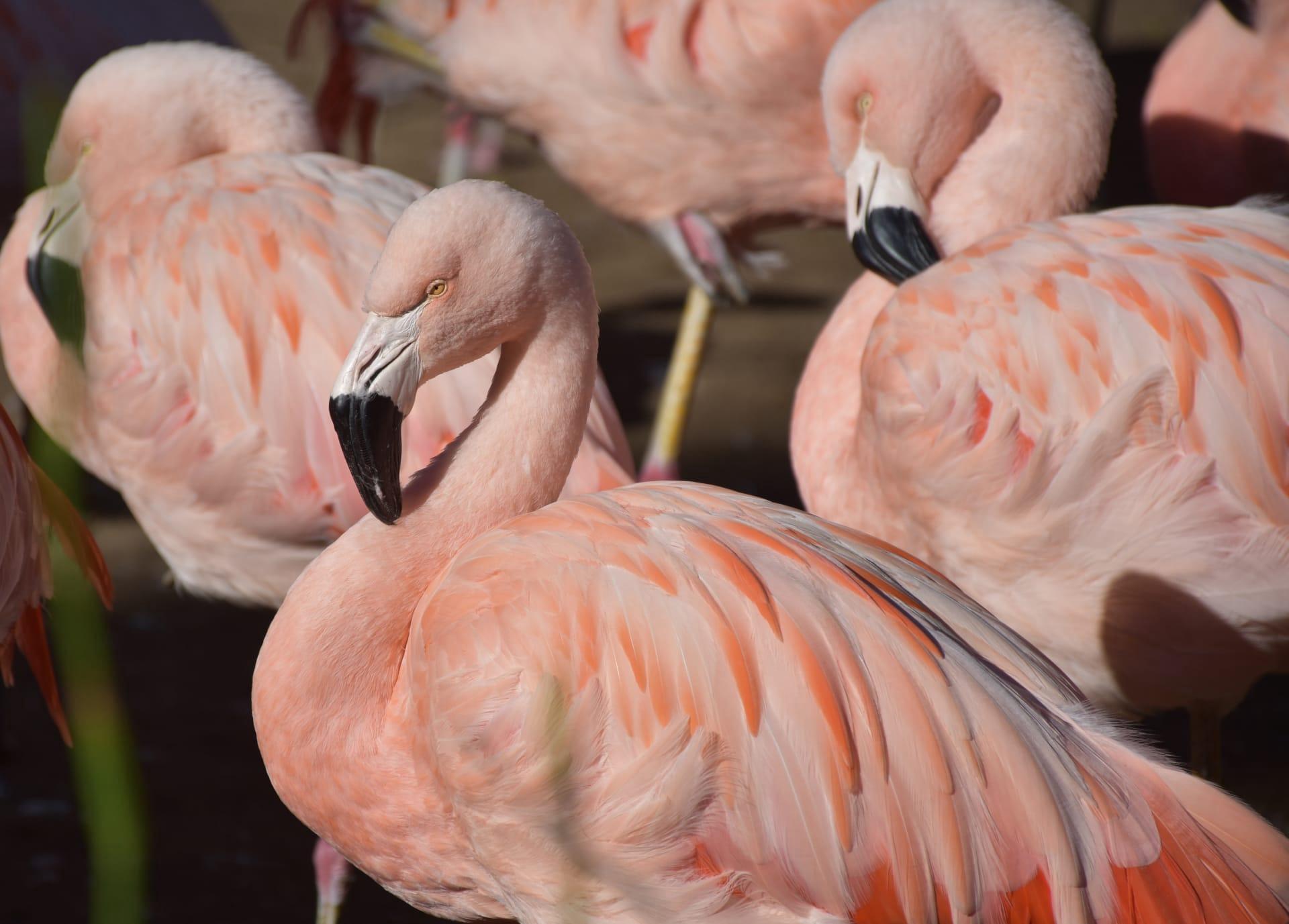Flamingo Characteristics
- Home /
- Mini Encyclopedia /
- Animal /
- Flamingo Characteristics
1
Flamingos, with their striking pink plumage, are among the most recognizable birds on the planet. These elegant creatures can reach up to 4.6 feet in height and weigh between 4 to 8 pounds, making them fairly large in the bird world. A flamingo's lifespan is remarkable, often living for 20 to 30 years in the wild, and some individuals in captivity have been known to live over 50 years. Their long, slender legs, which can be longer than their entire body, are not just for show; they're adapted for wading in shallow waters.
The most distinctive organ of a flamingo has to be its beak. This unique beak is not just a mere feeding tool but a sophisticated filtering system. Adapted for their feeding habit, the beak is bent downwards in a peculiar angle, which allows flamingos to feed on small organisms—like algae, crustaceans, and small fish—in muddy waters. The beak's structure, combined with a specialized tongue, helps in sucking water and trapping the food, which is then filtered out by the fine hair-like structures called lamellae.

2
Question: Why are flamingos pink?
Answer: The vibrant pink color of flamingos is not innate but rather a result of their diet. These birds primarily feed on algae and invertebrates like shrimps and crustaceans, which are rich in carotenoids—a pigment also found in carrots and other orange plants. When flamingos consume these organisms, their bodies metabolize the carotenoids, transforming their feathers from a dull, grayish-white at birth to the vibrant pink we associate with them. The intensity of the pink color can vary depending on the specific diet of the flamingo, with some appearing more orange or lighter in color if their diet lacks these pigments.

3
Flamingos are not just famous for their color but also for their peculiar way of moving. These birds are known for their "flamingo dance," a series of movements including head flagging, wing salutes, and marching, often observed during courtship rituals. They can also fly at speeds of 35 to 40 miles per hour, covering distances up to 300 miles to find suitable feeding grounds. This ability to fly long distances is crucial for their survival, especially in changing environmental conditions.
In terms of feeding, flamingos are filter feeders. They feed by stirring up mud with their feet in shallow water, then dipping their beak in upside-down. The beak acts as a sieve, filtering out mud and water, and retaining small food items. They use their tongue to pump water in and out of their beak, trapping food particles. This method of feeding requires specific habitats like shallow lakes, mangrove swamps, and sandy islands where they can easily access food.

4
Flamingos thrive in diverse habitats ranging from large alkaline or saline lakes to lagoons and muddy flats. They prefer environments where extreme conditions limit their predators and competition for food. Such habitats include regions in Africa, South America, the Caribbean, and parts of Europe and Asia. These areas are often harsh and inhospitable to many other species, yet provide the ideal breeding grounds for flamingos due to the abundance of their preferred food sources.
Regarding reproduction, flamingos are monogamous birds, typically forming long-term pair bonds. The breeding season varies depending on the location, but generally, it's during the rainy season when food is abundant. Flamingos engage in synchronized group nesting, where thousands of birds may breed simultaneously. They build mud nests, raised to protect their single egg from flooding and ground heat. Both parents take turns incubating the egg for about 28 to 32 days. After hatching, flamingo chicks are fed a form of "crop milk," a nutrient-rich fluid produced by both parents.

5
Book: "The Secret Life of Flamingos" by Dr. Sarah Kingston, published in the United States in 2010, delves into the fascinating world of flamingos. This book offers insights into their social behavior, migration patterns, and the unique adaptations that allow them to thrive in some of the most extreme environments on Earth. Kingston, a renowned ornithologist, combines years of research with stunning photography to bring the story of these birds to life.
Book: "Flamingos: The Pink Mystique" by Eduardo Gomez, released in 2015 in Spain, is a comprehensive guide to the biology and conservation of flamingos. Gomez, a wildlife biologist, explores the challenges these birds face in the wild, including habitat loss and climate change. The book also covers the cultural significance of flamingos in various societies and efforts to protect their habitats worldwide. Gomez's passion for flamingos and conservation shines through in this detailed and enlightening read.